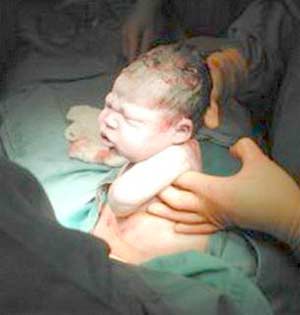 |
|
C-section delivery method |
British scientists have reported a rising trend in cesarean deliveries in developing countries, highlighting that this method can pose more risks to mothers and newborns compared to natural childbirth.
Researchers indicate that postpartum complications for mothers who undergo cesarean sections often include high fever and the potential need for antibiotic treatment, which can impact breastfeeding. This, in turn, raises the risk of preterm births and increases mortality rates for both mothers and newborns.
A survey of 97,000 births across eight South American countries—Argentina, Brazil, Cuba, Ecuador, Mexico, Nicaragua, Paraguay, and Peru—revealed a 10-20% higher mortality risk for infants born via cesarean section compared to those born through natural methods. Experts believe this study will spark controversy in the UK, where women are advocating for the right to choose their childbirth method.
The cesarean rate among women in the UK has more than doubled over the past 20 years, now accounting for nearly 22% of all births. The Royal College of Obstetricians and Gynaecologists in the UK strongly opposes cesarean delivery, arguing that it undermines women’s natural reproductive functions. In the UK, the cost for a cesarean delivery is £3,200 (approximately $6,000), nearly double the cost of a standard vaginal delivery.
Q.HƯƠNG


















































